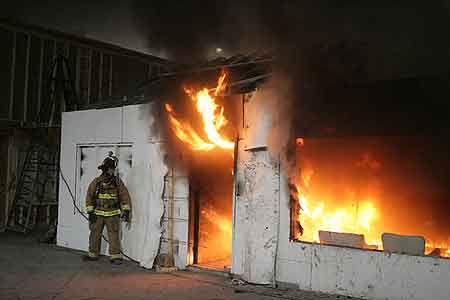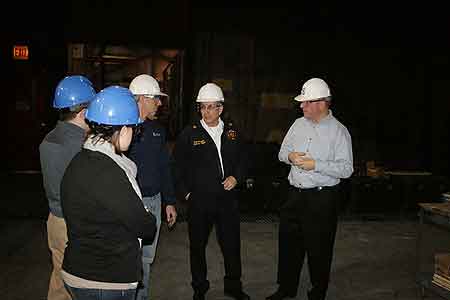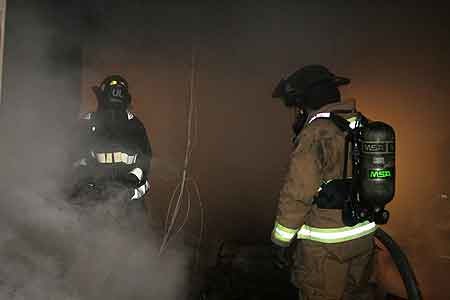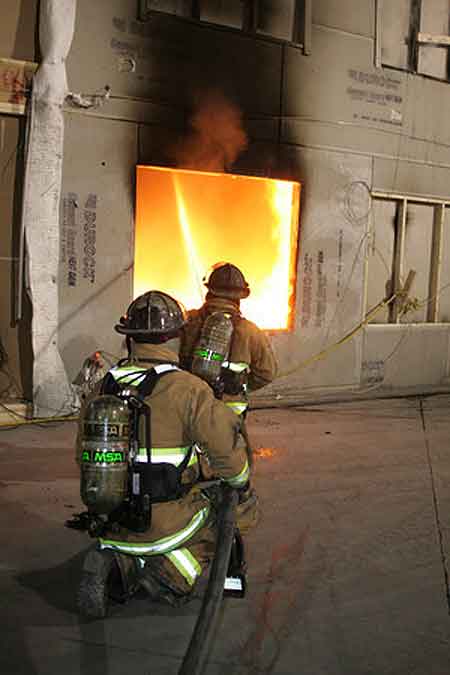By Bobby Halton
Fire Engineering Editor in Chief
Photos by Tim Olk (olkee.smugmug.com)
On February 2, 2012, Fire Engineering had the pleasure of spending Groundhog Day with our good friends at Underwriters Laboratories (UL). The folks at UL have been conducting live fire experiments in order to try to ascertain what the effects of various forms of ventilation tactics have on fire behavior. Aided by a grant from the fire act and working closely with the good folks from the National Institute of Standards and Technology (NIST), experiments have been conducted on positive pressure ventilation and high-rise buildings, floor collapse in various floor configurations, natural ventilation in residential buildings, and, currently being studied, vertical ventilation and residential structures. In the earlier experiments done at the lab in Northbrook, Illinois, under the direction of Steve Kerber, UL scientists and a team of firefighting experts examined the effects of natural ventilation using the existing windows and doors only. The fire service was able to learn a great deal about what happens when we force the front door and take available windows.
The second round of experiments is taking a hard look at what happens to fire behavior when we ventilate vertically. Inside of the UL laboratory are two structures: one is a 1,200-square-foot, single-story ranch, representing legacy construction and a standard house for the entry-level market; the second is a 3,200-square-foot, two-story, open floor plan that matches what is pretty much the standard fare for residential construction today (maybe a little on the large side for some economies, but nonetheless a fairly standard building.) The buildings are furnished with standard furniture, as you would find in most homes today. Of course, the fuel load does not match exactly what every home might, have but it comes fairly close to what firefighters could expect in a modern residential setting.
Once these studies are completed, a selected group of firefighters will look at the data and come up with recommendations as to how firefighters can more efficiently and effectively but most importantly safely approach ventilation of residential structures. The good folks at UL have assembled a team of firefighters from around the globe to look at the results of the tests and discuss the various tactics that we have available to us as firefighters in relation to the findings on fire travel, heat flow, increased energy release, tenability, and several other dimensions. The group is comprised of men and women from career, volunteer, combination, brigade, and industrial. The backgrounds of these men and women are as varied as the parts of the country and world that they come from. Some of them are degreed scientists while others have degrees in street firefighting earned the hard way through years of experience and countless hours spent in evaluating that experience.
Many of you may remember the positive pressure ventilation tests that were conducted earlier in cooperation with UL, the NIST as well as the natural ventilation studies. The interpretation of that data from that research has had some interesting effects. One department was reported is actually stopping ventilation in working residential fires, based on how they interpreted the data. Nothing could be further from the truth. Firefighters must read the reports carefully and remember that these are scientific studies done under controlled conditions. All the variables that occur at a fire need to be taken into careful consideration when making any decision as to how to ventilate, where to ventilate and when to ventilate. The other issue is to always make sure that you’re getting the correct interpretation of the data.
Fire Engineering has already published several great articles by Steve Kerber and the team from UL on the previous studies. Steve is also presenting as well as Dan Madrzykowski, Jim Dalton, John Ceriello, George Healy, and David Rhodes (as well as most of the other firefighters selected to interpret this data) at FDIC 2012. It will be fascinating to hear these gentlemen interpret the data and see the recommendations they come forward with regarding how to conduct ventilation given similar construction, fuel load, and conditions. Fire Engineering will be publishing the results directly from Steve Kerber at the conclusion of this set of studies.

One of the other aspects of the testing being conducted at underwriters laboratory has to do with the difference in heat release rates between legacy furnishings (natural products such as wood, cotton, horsehair) and modern furnishings, which are predominantly polymer-based with open cell foam and rigid form plastic. In the picture above, legacy furniture filled the room and time to flashover was around 27 minutes.

In the photo above, firefighters had just witnessed one of the first burns of the day and are discussing some of their opinions with underwriters laboratory VP Christopher Hasbrook.

Shown above is the extinguishment process. UL is being very careful to make sure to carefully monitor the amount of water used in the effects of streams on the fires, heat travel, and other aspects of extinguishment methods.

Fire Engineering was very fortunate to be able to interview several of the key players in this landmark study, Christopher Hasbrook, Stephen Kerber, Dan Madrzykowski, and Jim Dalton. These interviews will soon be available in the On the Road with Bobby Halton series (http://emberly.fireengineering.com/video.html).

In the photo above are Atlanta (GA) Battalion Chief David Rhodes, Bobby Halton, and Phoenix (AZ) Battalion Chief Todd Harms.

Dan Madrzykowski, Chris Hasbrook, Bobby Halton, Steve Kerber, and David Rhodes.

Members of the UL fire department extinguish one of the ground-floor fires.
MORE FIRE DYNAMICS
- NIST Report on TX Fire Urges Firefighters to Consider Wind Effects
- Wind-Driven Structure Fires: Adjusting Tactics and Strategies
- NIST Reacher Dan Madrzykowski Reviews Ventilation and Firefighter LODDs at FDIC 2011
- Mastering Ventilation to Decrease Firefighter Injuries and Deaths
- Wind-Driven Fire Research: Hazards and Tactics

